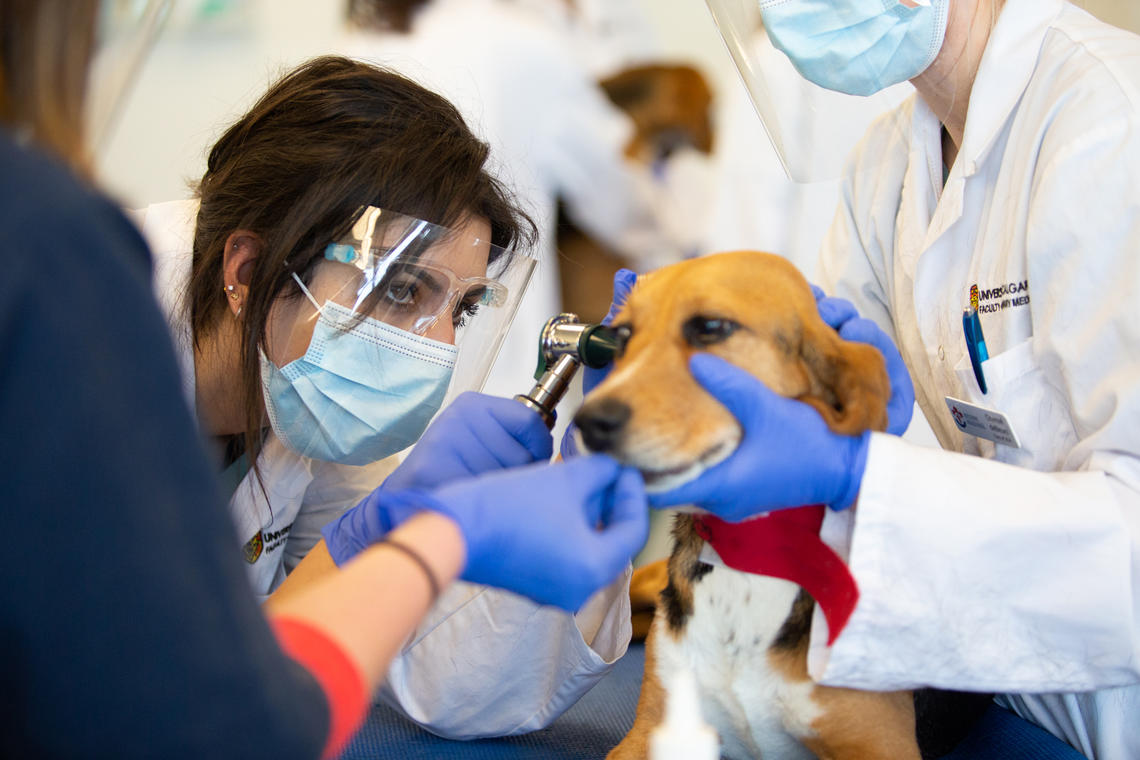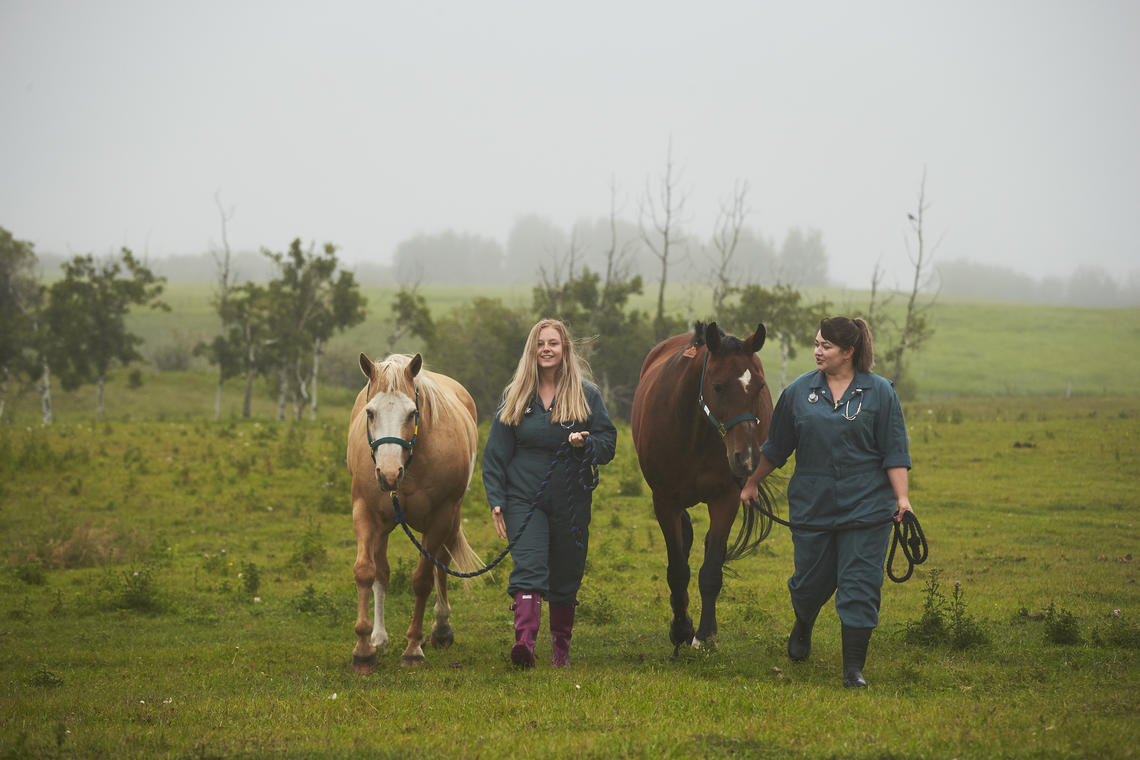May 11, 2022
Vet med at UCalgary to receive nearly $67M to double its enrolment

The Alberta government is providing an additional $8.4 million in funding to support enrolling more veterinary students at the University of Calgary Faculty of Veterinary Medicine (UCVM). This, along with $58.5 million in capital funding for construction of new infrastructure announced earlier this year, will allow UCVM to double its yearly Doctor of Veterinary Medicine (DVM) enrolment, from 50 to 100 students, by 2025.
“This funding from the Government of Alberta will ensure that the University of Calgary can train enough new veterinarians to help address the shortage of animal health professionals in our province, while also supporting the growth of a major economic sector,” says Dr. Ed McCauley, UCalgary's president and vice-chancellor.
The new funding, over three years, was announced on May 10 at a news conference at UCVM’s Clinical Skills Building by Premier Jason Kenney, who was also accompanied by the minsters of advanced education and agriculture, forestry, and rural economic development.
- Photo above, from left: Demetrios Nicolaides, minister of advanced education; Dr. Renate Weller, dean, Faculty of Veterinary Medicine; Nate Horner, minister of agriculture, forestry, and rural economic development; Dr. Natasha Kutryk, vice-president - south region, Alberta Veterinary Medical Association; Gordon Atkins, UCVM professor with cow; Jason Kenney, premier of Alberta; and Jackie Lovely, MLA for Camrose.
Need for veterinary care growing faster than new vets can be trained
The expansion will help address a long-brewing shortage of veterinarians that’s hit the critical point in both rural communities and in urban centres in Alberta.

Increasing the number of seats in the DVM program will allow more Alberta students to study veterinary medicine at a time when more vets are badly needed.
Riley Brandt, University of CalgaryI
Dr. Renate Weller, dean, UCVM, says increasing the number of seats in the DVM program will allow more Alberta students to study veterinary medicine, providing the only long-term sustainable way to ensure animal care in Alberta. The increased need for more skilled veterinary clinicians and researchers is due to what Weller calls a “leaky bucket phenomenon.” The sector has grown faster than schools have been able to graduate new vets and there’s also a ‘concerning’ attrition rate among veterinarians, a challenging high-pressure, high-stress profession with long hours.
“Beef plays a big role in Alberta, so, from an agricultural business side, there is a need to expand, and government needs more vets because we all want safe food,” Weller says. “We also need vets to do research on One Health issues such as coronavirus.
"And there’s an expansion in the pet sector with more people owning dogs, cats, rabbits, and other small animals. There was a steady growth before the COVID pandemic started, which has accelerated considerably during the last two years.”
Vet med teaching spaces, faculty, and staff already at capacity
UCVM’s infrastructure is at capacity, and, with the additional strains of COVID-19, so are faculty and support staff. The transition to accommodate twice as many students – building new infrastructure, hiring more faculty and staff, and creating the curriculum – will take three years. This fall, five seats will be added. In 2023, another five seats will be added, and the full program will double to 100 students by 2025.

During the four-year program, vet med students learn to care for a variety of animal species – from cats and dogs to horses, cows and other livestock.
Todd Korol, for the Faculty of Veterinary Medicine
When completed, the new facilities, along with new operational funding, will enable UCVM to take a leading role in addressing critical labour shortages while providing world-class learning experiences.
“Rural Alberta relies on highly skilled and knowledgeable veterinary specialists to support the vitality of their businesses. These investments are very important steps in the process of ensuring we have more skilled vets available in our province, while offering students the chance to train for successful careers in this field close to home,” says Demetrios Nicolaides, Minister of Advanced Education.






